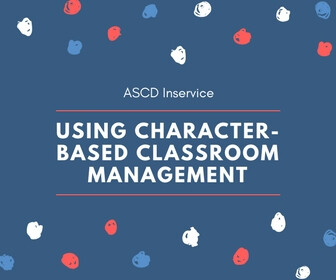I feel like teachers aren’t respected. We aren’t treated as professionals.–Tia, 3rd grade teacher
It is very difficult right now—physically and mentally exhausting, and I have never felt more unappreciated than I do now.-Pre-K teacher
I wonder DAILY if I am meeting the needs of my students because there are no real structures in place to support their learning.-Isis, 5th grade teacher
If I had an alternative, I would take it.– Jennifer, 6th grade ELA teacher
These are a few sentiments from educators working during a global pandemic who answered an informal survey I sent out on Twitter. Thirty-two educators, from North Carolina, and several other states, responded.
Back in March 2020, when professions around the world were first impacted by the COVID-19 virus, very few would have imagined that we’d still be in this same space of uncertainty almost a year later, with schools still not fully physically opened. It would be nice to be able to say things have gone considerably well for most teachers across the country during this past year. But the reality is, educators have felt an overwhelming amount of frustration while navigating the world of educating during a global pandemic. Lack of respect or acknowledgement of their risk-taking is part of that frustration.
Last year, educators across the United States were heralded as “superheroes,” celebrated for the way in which they handled the transition from in-person learning to being fully remote. Now, those declarations of applause have been drowned out by the resounding boom of vitriol. There is a barrage of comments from some corners centering on teachers being “lazy” and “unprofessional.” Criticism often comes when teachers advocate for safer school environments to accommodate teaching in-person or when they express reluctance to have schools fully open because they worry for children’s safety and their own.
Districts Aren’t Always Coming Through
Most educators feel incredibly disrespected and disappointed in their district’s response to the pandemic. Educators I’ve heard from seem most upset about their district’s push to have them back in unsafe buildings that aren’t up to code. For instance, in the district where I work, we have several buildings where the HVAC systems don’t operate properly. Given this, and wide community spread, my district has moved between remote and in-person learning throughout the year.
New learning models are also frustrating. While some educators remain in a fully remote setting, others follow hybrid models, bouncing back and forth between virtual and in-person teaching or teaching some kids remotely while others, simultaneously, learn in a room with the teacher. Some teachers have had to administer standardized tests in person. High schools in my district had to give students End-of- Course tests—with no virtual options.
Here’s what educators I surveyed said about the pressures they feel in doing hybrid instruction or administering tests:
I am currently teaching in person and [simultaneously] teaching my remote students 5 days a week. I feel that I am not able to give them what they need because of the difficulty of teaching both every day.-Anonymous, PreK teacher
I was using three devices [to teach remotely] and was unable to keep up with [simultaneous] live lessons. Monitoring the students is doable, but actively teaching is not feasible and unfair to students and the teachers.-Anonymous, 8th grade ELA teacher
I had to be in person for state testing … we struggled with a lack of teachers and staff to help, and we worked so much extra to constantly sanitize everything. Students were there, but they still were not able to socialize or be close with each other.-Melissa, 10th grade Math teacher
I had to administer EOC tests. Asking families to choose between grades and the health/safety of loved ones is deplorable. [We had] many stories of teens and families who were so afraid to come in the building. . . . Our freshmen had never even been in the building before testing started this week.-Lori, 9th grade World History teacher
I have been in the building during in-person instruction and it looks like a dystopian nightmare. Kids are still staring at screens all day and unable to move around. There’s caution tape around the water fountains. It’s jarring.-Anonymous, Literacy Coach
Can We Restore Educator Joy and Respect?
Reading these educators’ experiences raises important questions about how to support demoralized educators before it’s safe to open buildings. How can we minimize such stressful experiences and ensure that our educators feel respected and valued as the professionals they are?
To help educators feel respected again:
Telling teachers to change something is fine; giving them extra responsibility is also fine. But doing so a day or two before and expecting them to drop everything is disrespectful.– Anonymous, 8th Grade ELA teacherFocus more on people’s well-being (rather than productivity and performance both for students and teachers). Provide support and encouragement.-Jennifer, PreK teacherHalt teacher evaluations and let us do what we know how to do best–teach. We are doing all that we can because we care. It does not make sense to be evaluated by someone who has not done virtual teaching.–Anonymous, Kindergarten teacher
To make hybrid learning easier and more successful:
Limit the amount of time students are in front of devices.– Anonymous, 8th Grade Math/Science Coach[Schools should] find a way to communicate to parents of online students that engagement is important. We need to find better ways to encourage participation of online students during class, and we need the parents to help us do this.-Anonymous, 5th Grade Science/Social Studies teacherPlease change the schedules. We should not be on the computers for as long as we are. . . . We are trying to fit a traditional day into an online environment.-Kristofer, 11th Grade American History teacherNo “homework” [requirements] Kids are already at home sitting at the computer all day; having them back on it for hours asynchronously is not cool. I think any homework should be personal enrichment activities not requiring screen time.-Paul, 12th Grade English teacher
One Thing You Can Count On: Teachers
One thing is clear. While no option—teaching remotely, in person, or hybrid—may be the one best solution for education during a global pandemic, educators are going to continue showing up. While they are exhausted, experiencing anxiety and frustration, they are not going to stop doing the job. With the increased frustrations surrounding working in this situation, it goes without saying that a little respect goes a long way. Our unwavering commitment to our work and our students deserves it.
All stakeholders should understand that we can all agree on one thing: everyone wants to be back in the school building. But it’s non-negotiable that we need to wait until that’s safe for everyone. While we remain in this complicated, sometimes messy space, we can continue to extend grace to one another and acknowledge that this isn’t an easy task for anyone. The best we can do is to lean in and remain focused on working together, not against one another.
Merisha Leak (@MerishaLeak) is a secondary academic facilitator in Charlotte, North Carolina. She is a lifelong learner and equity champion.








